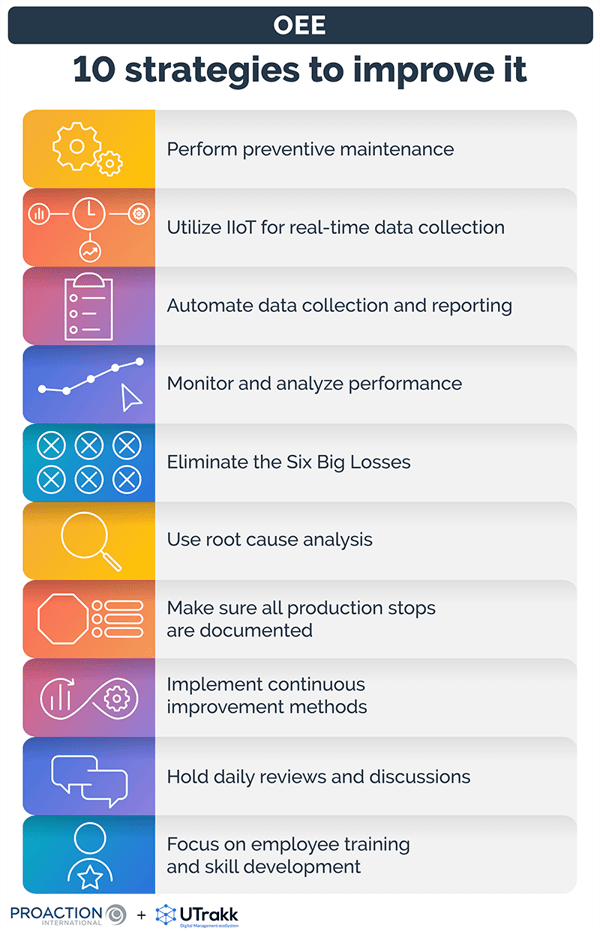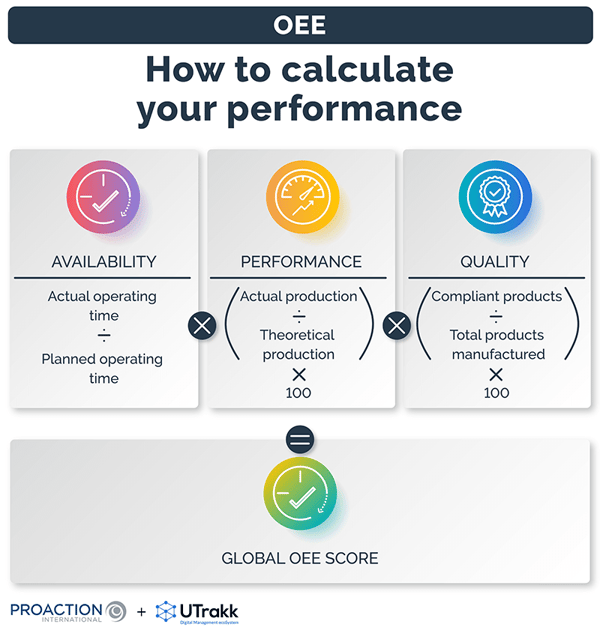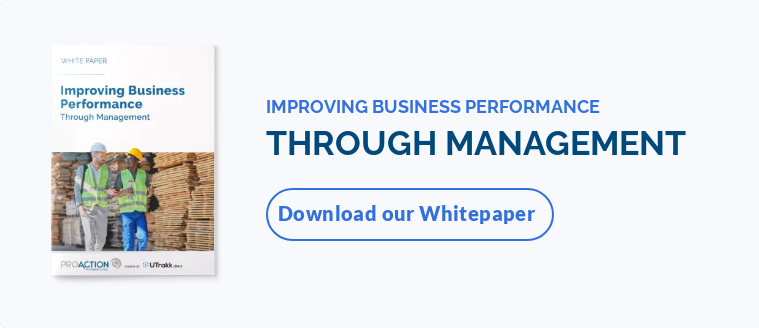10 strategies to improve Overall Equipment Effectiveness in your manufacture

1. Perform preventive maintenance
Prevention is better than cure! Well-maintained equipment is essential for smooth production.
Planning and carrying out regular maintenance tasks is essential to avoid unexpected breakdowns. It includes inspection, lubrication, replacement of worn parts, and other scheduled activities.
Performing regular preventive maintenance activities allows you to:
- Prevent unplanned machine downtime and equipment failure by identifying and correcting potential problems before they become critical.
- Extend equipment usage and availability by keeping it in good working order.
- Maintain the quality of each part or product by avoiding breakdowns that could affect it.
2. Utilize IIoT for real-time data collection
Use the technologies available! Instead of manually collecting data, the Industrial Internet of Things (IIoT) enables real-time data collection directly from production equipment and machines when connected to a network.
This strategy helps to improve availability and quality:
- Real-time visibility on machine performance, enabling rapid intervention in the event of problems.
- Accurate data collection on production, maintenance, and quality, facilitating analysis.
- Predict maintenance requirements by monitoring equipment parameters.
3. Automate data collection and reporting
Automated production data collection and reporting offer a severe advantage, simplifying OEE monitoring.
With this information, you can:
- Eliminate human error and ensure data consistency.
- Save time by avoiding tedious manual tasks for your employees.
- Obtain real-time production reports with an immediate overview of performance.
4. Monitor and analyze performance
The Pareto analysis (or "80/20 rule") states that "80% of the results come from 20% of the causes", meaning that a small number of factors generally causes most problems or inefficiencies.
In performance management, the idea is to apply the Pareto principle to identify the major causes of problems or disruptions in the manufacturing process - the 20% of causes responsible for 80% of problems. Your aim is, therefore, to prioritize the significant problems that have the greatest impact on overall performance.
By using this method, you can:
- Focus your resources and efforts where they will have the most excellent effect.
- Avoid dispersion of effort on less significant problems.
- Improve efficiency and optimize the overall performance of your operations.
5. Eliminate the Six Big Losses
The Six Big Losses refer to the group of major factors resulting in waste and loss of production time: planned stoppages, unplanned stoppages, minor stoppages, slow cycle times, scrap, and production rejects.
They are divided into three OEE categories: availability loss, quality loss, and performance loss of performance.
By identifying and eliminating these losses, you can significantly improve your OEE and, by extension, your manufacturing efficiency:
- Reduced unplanned downtime
- Optimized cycle time
- Improved quality
- Efficient use of resources
- Cost savings
6. Use root cause analysis
Root cause analysis, also known as RCA, involves identifying the underlying causes of production problems.
To carry out a RCA, you need to define the problem, determine its causes, find the root cause, consider solutions, create an action plan, and then verify and measure the effectiveness of the solution in question.
This approach allows you to:
- Understand the root causes of problems to find more sustainable solutions.
- Prevent the recurrence of problems by eliminating the root causes.
- Increase quality by eliminating problems at the source.
7. Make sure all production stops are documented
Every production stoppage must be documented and analyzed to improve Overall Equipment Efficiency.
Thanks to this feedback, you can:
- Identify trends and recurrences of breakdowns to correct them effectively.
- Involve operators in continuous improvement by collecting their suggestions.
- Reduce unplanned downtime by acting quickly on identified problems.
8. Implement continuous improvement methods (Kaizen)
Continuous improvement is an iterative process aimed at constantly optimizing performance.
The use of methodologies such as Kaizen leads to the following:
- A culture of continuous improvement within the company.
- Innovation and optimization of processes for improved performance.
- Involvement of all team members in the search for solutions to increase OEE.
9. Hold daily reviews and discussions
Daily meetings or regular performance reviews allow the production team to stay informed and identify problems quickly.
These meetings and discussions help to:
- Maintain real-time monitoring of the production process.
- Identify problems quickly and draw up action plans.
- Facilitate communication within the team, strengthening problem-solving and ensuring everyone is on the same page.
10. Focus on employee training and skill development
Well-trained employees are the key to maintaining equipment, monitoring production, and reacting quickly to problems.
Investing in training and coaching to develop employee skills is essential because it helps to:
- Ensure that operators can maintain equipment and react to problems.
- Encourage innovation and increase employee efficiency.
- Create a work environment where workers are motivated and engaged in continuous improvement.
How to calculate OEE performance
Three factors are used in measuring OEE: availability, performance, and quality. The formula is as follows:

Availability
Measures the availability of production equipment to carry out planned tasks over a given period. Availability is critical in assessing the efficiency of specific machines or production lines.
Availability = Actual operating time / Planned operating time
- Actual operating time corresponds to the time during which the equipment was actually in service for production. It excludes unplanned downtime and periods of preventive maintenance.
- Planned uptime represents the time the equipment should have been in service for production in the absence of downtime or breakdowns.
High availability contributes to better resource utilization and reduced unplanned downtime.
Performance
Performance measures equipment efficiency by comparing actual and theoretical production over a period. Performance is crucial in assessing the extent to which a machine or production line achieves its maximum production potential.
Performance = (Actual production / Theoretical production) x 100
- Actual production represents the quantity of products manufactured during the production period.
- Theoretical production is the quantity of products a machine or production line should ideally produce during the same period if it operates without losing time or quality.
A performance of 100% means that the equipment is operating at total capacity, with no loss of time or quality.
Quality
Quality measures the quality of the products produced by a machine or production line over a given period. The quality component assesses the equipment's ability to create products that comply with specifications and quality standards.
Quality = (Compliant products / Total products manufactured) x 100
- Conforming products represent the percentage of products without defects that meet established specifications and quality standards.
- Total products manufactured is the total quantity of products manufactured during production.
A quality of 100% means that all products are compliant, with no defects.
Key performance indicators (KPIs)
In addition to OEE, several key performance indicators are essential for measuring plant performance, including Mean Time Between Failures (MTBF) and Mean Time To Repair (MTTR).
MTBF (Mean Time Between Failures) measures the average time between breakdowns of a machine or piece of equipment.
For example, if a piece of equipment ran for a total of 2,000 hours over a month, suffered 4 breakdowns, and had a total uptime in lost hours of 20 hours, the MTBF calculation would be:
MTBF = (2,000 - 20) / 4 = 495 hours
MTTR (Mean Time To Repair) evaluates the average time needed to repair a piece of equipment or a machine after a breakdown.
For example, if you had 10 breakdowns in a month, and the total repair time for all these breakdowns was 100 hours, the MTTR calculation would be :
MTTR = 100 hours / 10 breakdowns = 10 hours per breakdown
How UTrakk helps manufacturers track and improve OEE
The UTrakk daily management system easily integrates OEE systems - Worximity, Wonderware, TrakSYS, Epicor, Redzone, Rockwell Automation, and more - to enable managers to monitor, on a single platform, all the key performance indicators, ensuring the organization's ongoing productivity and operational efficiency.
As mentioned at the start of this article, OEE is a key performance indicator that measures the efficiency of production processes. OEE software is designed to monitor and analyze the performance of production lines and machines, using data such as:
- Equipment availability and performance
- Product quality ;
- Downtime ;
- Number of units produced;
- Production cycle time;
- Defective units.
Available on all mobile devices, UTrakk accompanies proximity managers on their daily field rounds, providing them with a checklist of questions and points to verify with their teams.
At the same time, they can track OEE-related performance indicators, which are collected automatically and continuously via UTrakk dashboards. As a result, while carrying out their active supervision rounds, managers have access to a wealth of data and information that enables them to quickly identify defects, slow cycles, and downtime and take immediate action to resolve manufacturing or productivity problems.

This combination of UTrakk and OEE systems gives managers powerful capabilities for optimizing operations, reducing waste, and improving operational performance.
Take action and implement OEE with success
Overall Equipment Effectiveness is a fundamental pillar for large manufacturing companies seeking to maintain market competitiveness. The 10 approaches unveiled above provide a solid framework for improving overall production performance. By combining these strategies with regular OEE monitoring and using relevant KPIs, organizations can achieve significant gains in efficiency and profitability.
Like any improvement, OEE is an ongoing effort that requires the entire organization's commitment, from top management to frontline employees, and the establishment of a culture focused on operational excellence.
In an increasingly competitive manufacturing environment, manufacturers who invest in improving their OEE benefit from better resource utilization, lower production costs, increased customer satisfaction, and a stronger market position.
The relentless pursuit of OEE improvement is, therefore, not just another objective but a necessity if we are to remain at the forefront of the manufacturing industry and meet current and future challenges.










